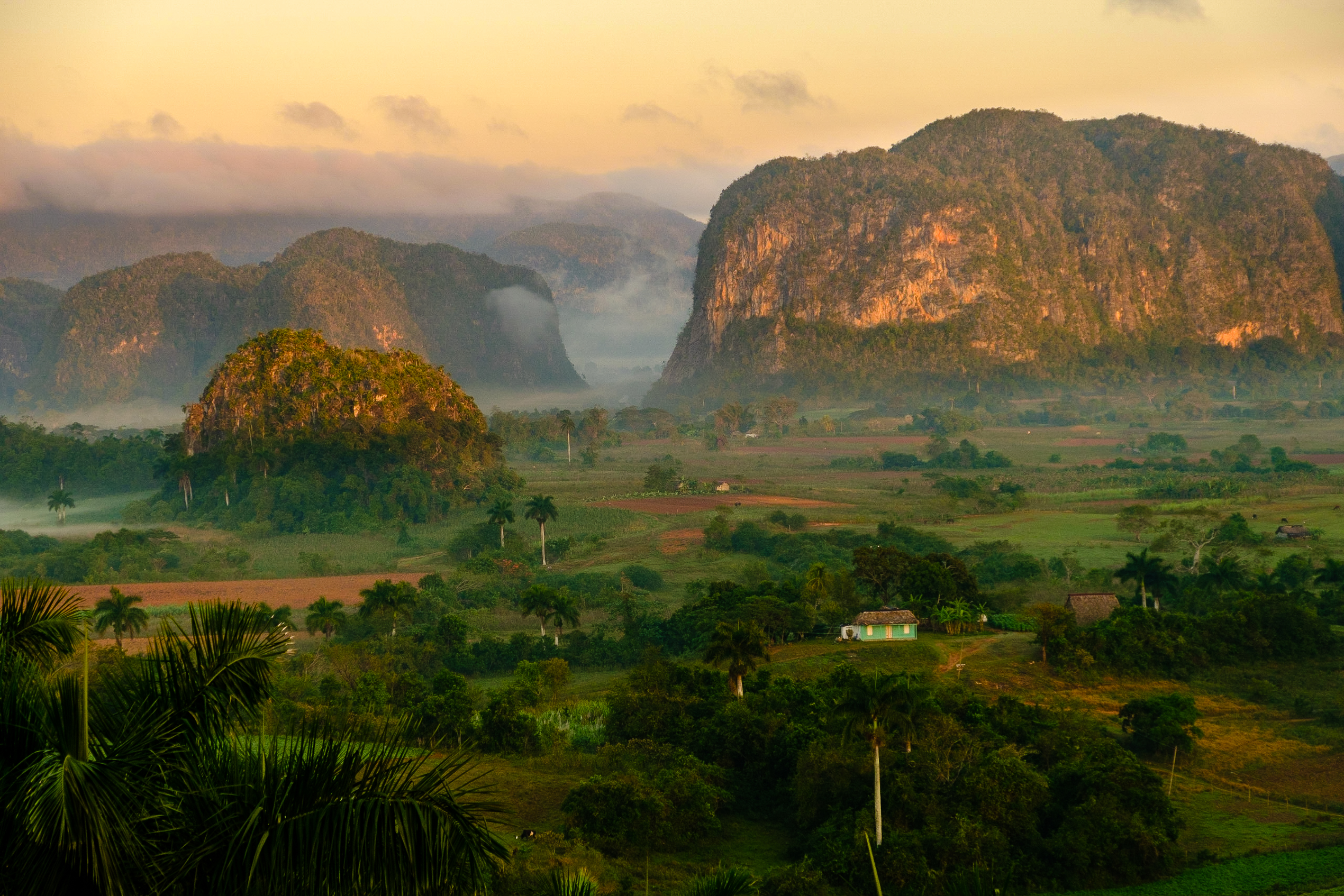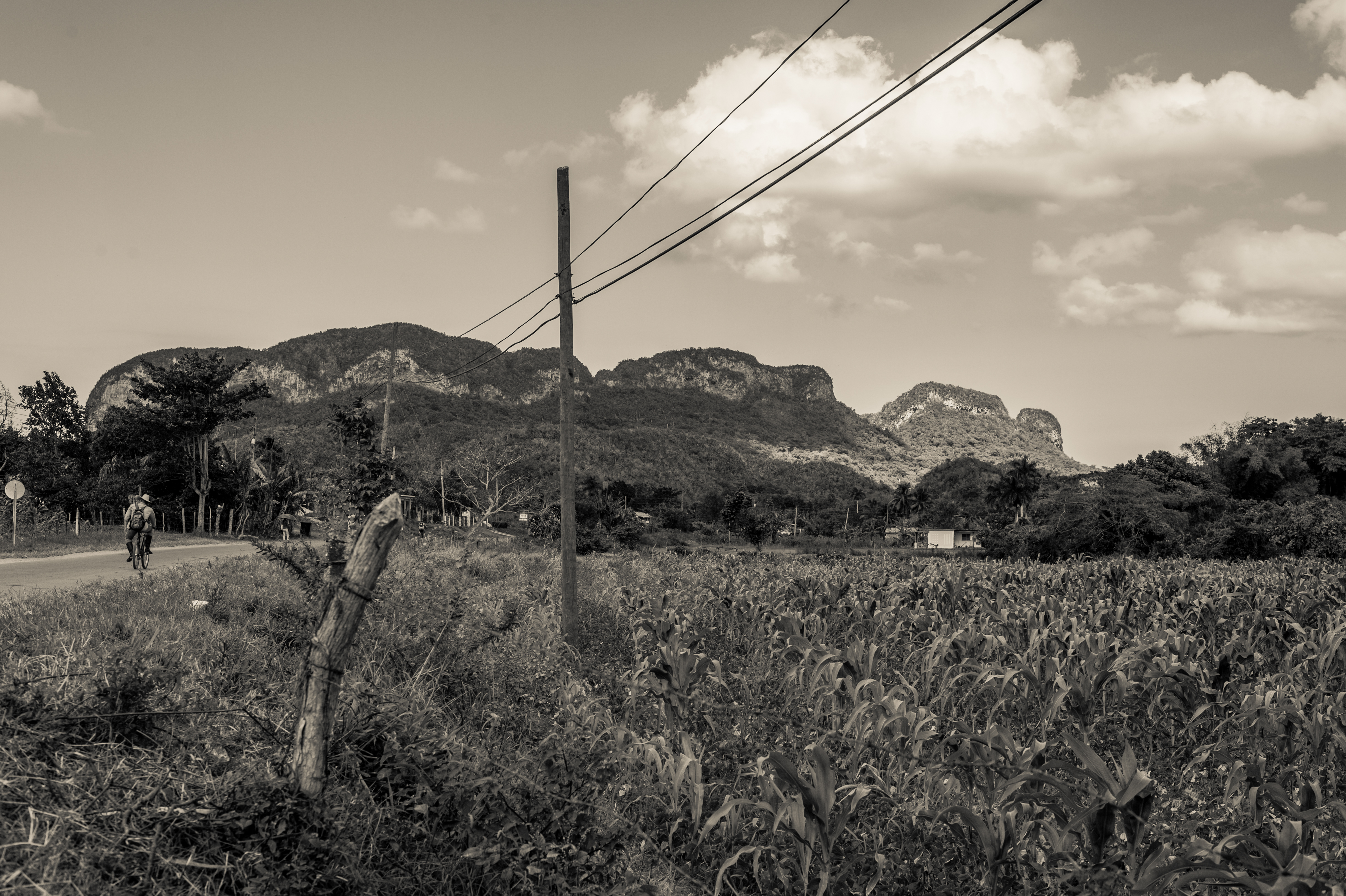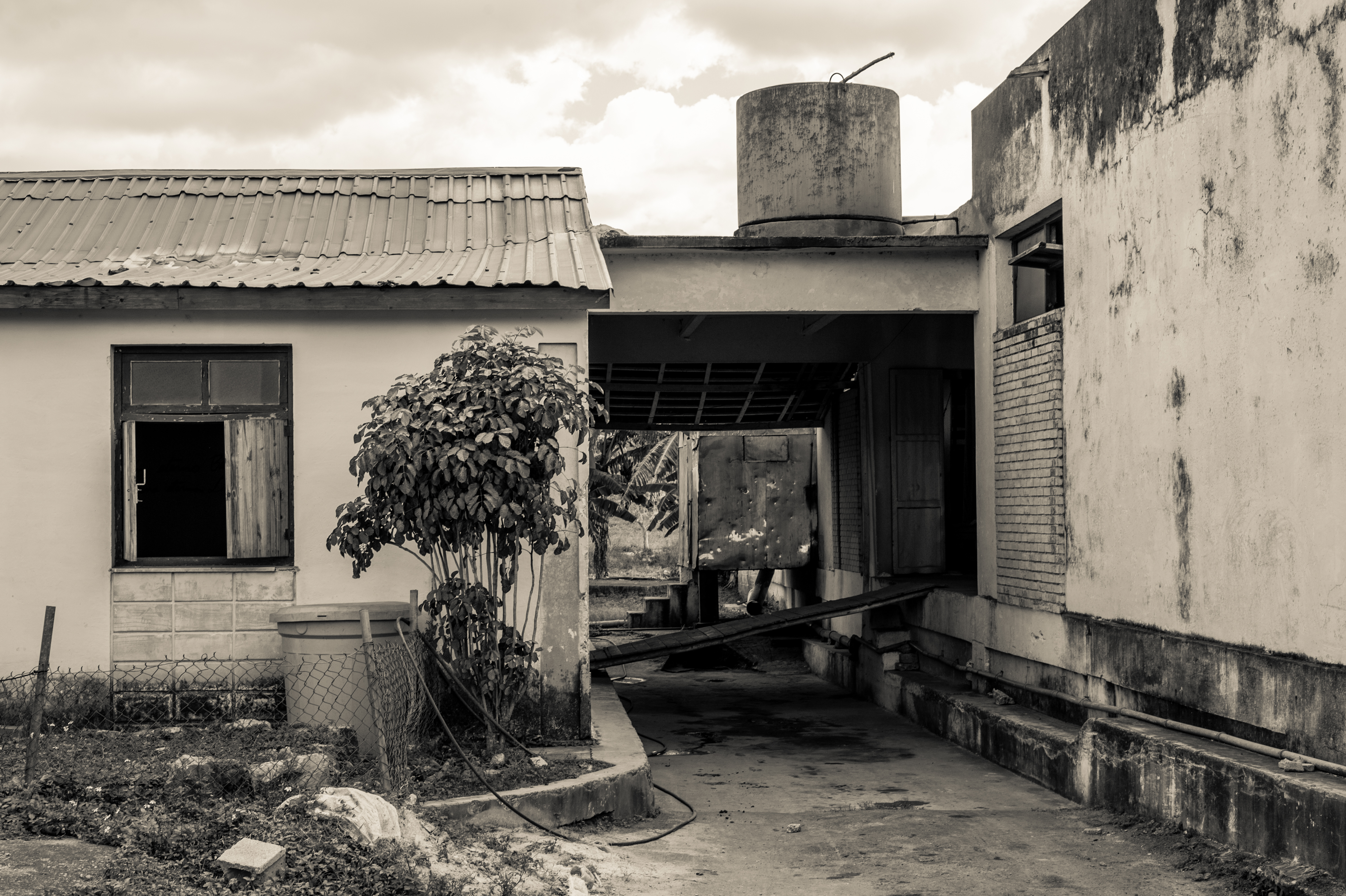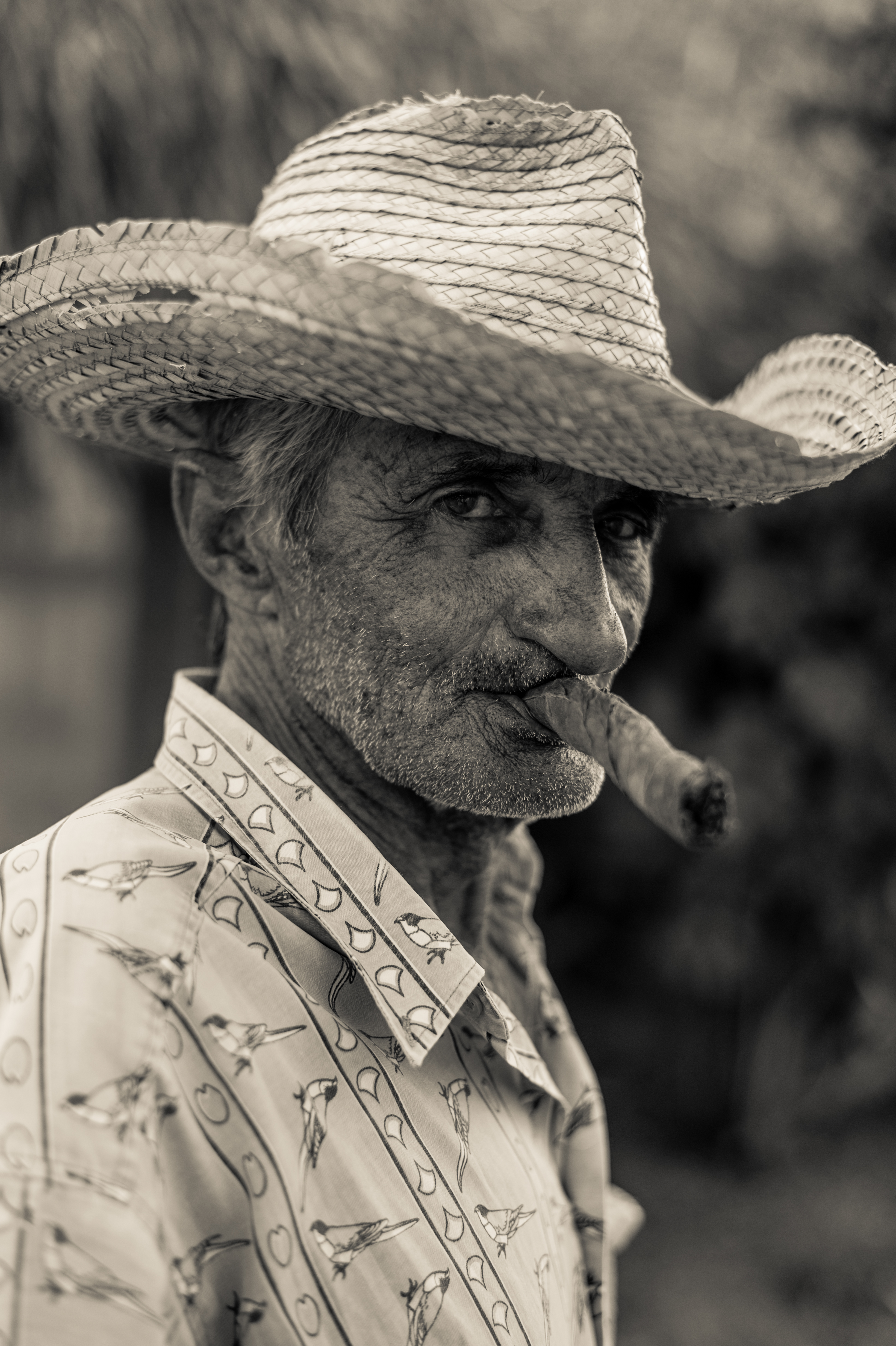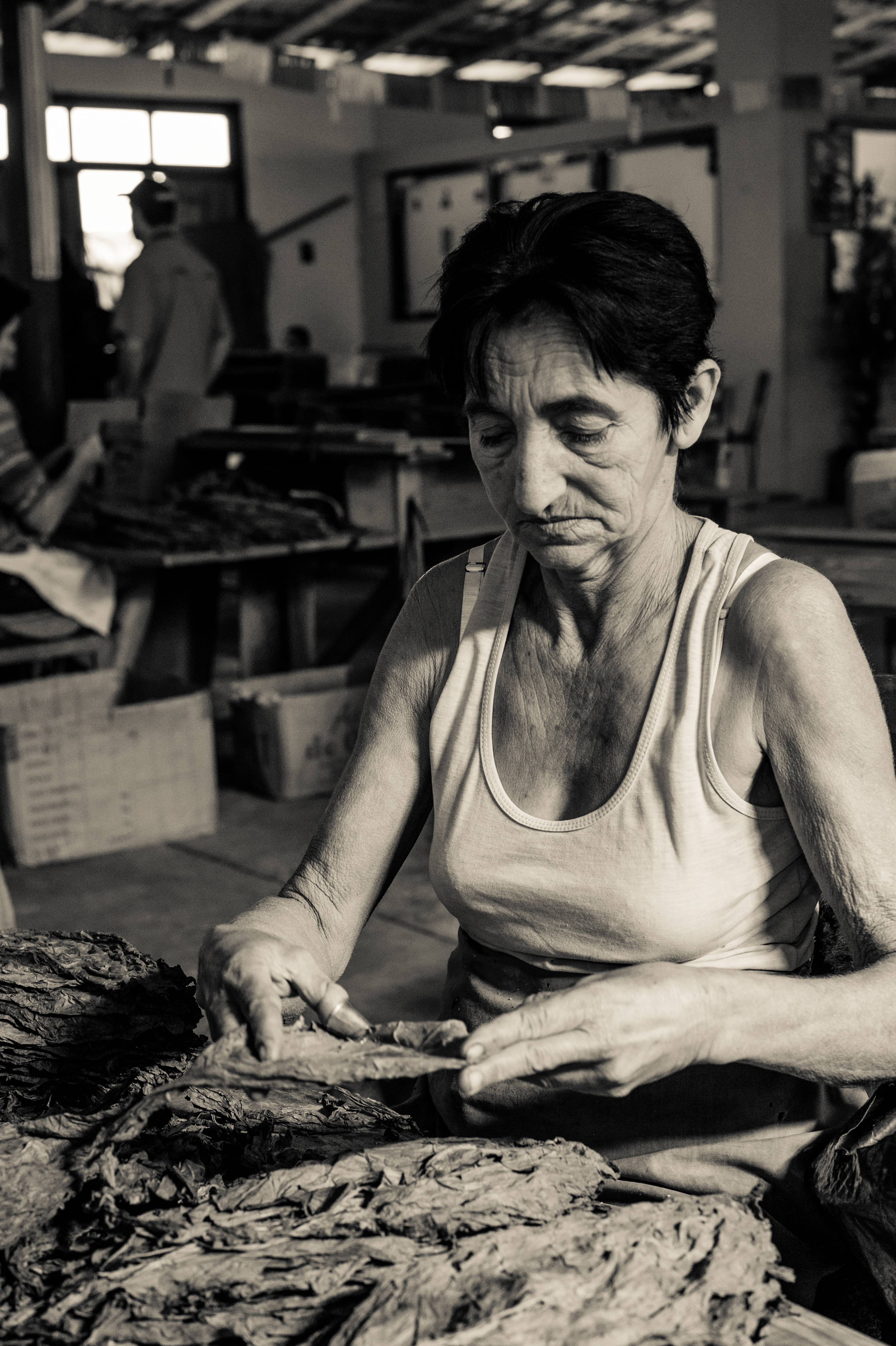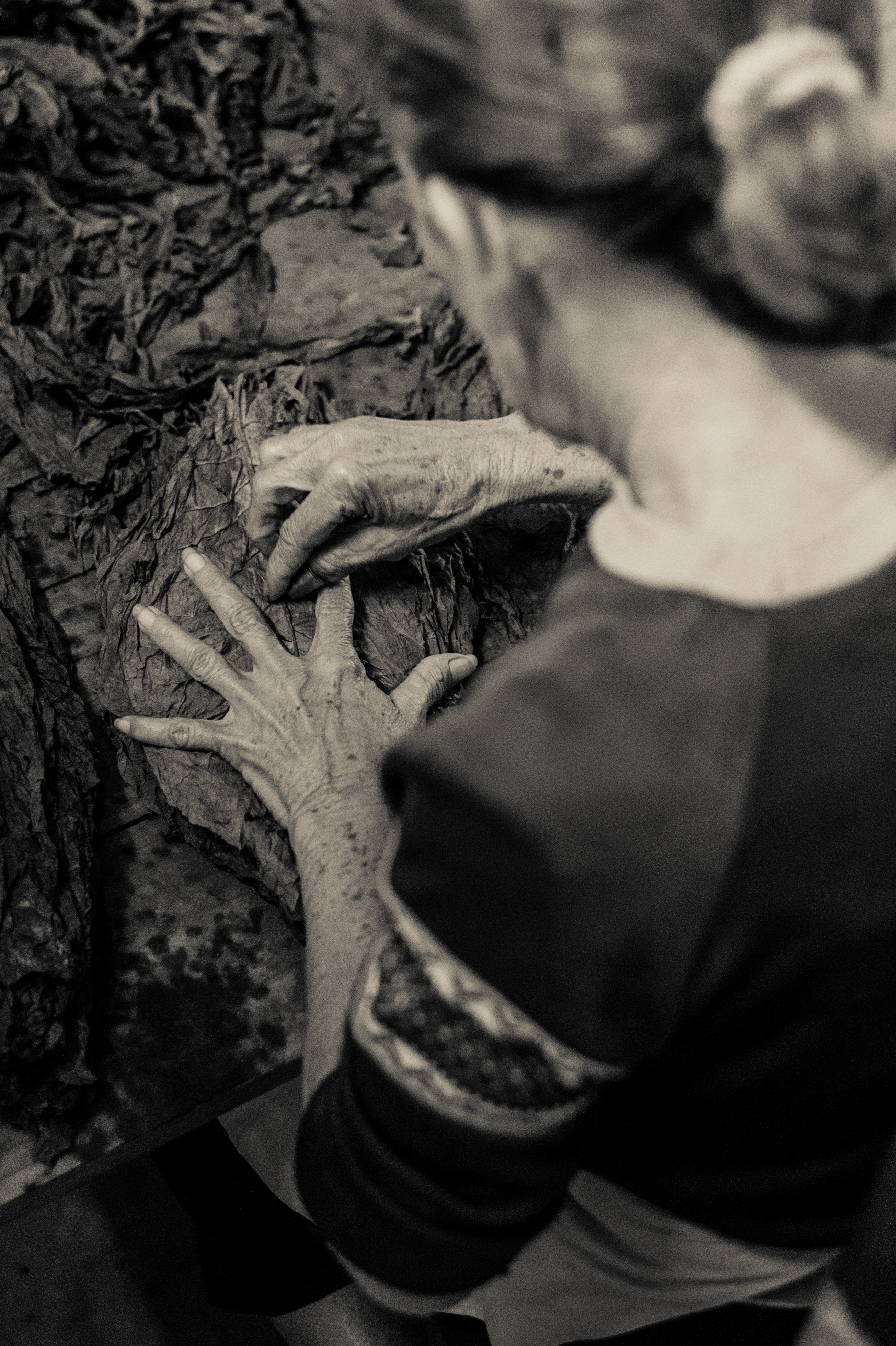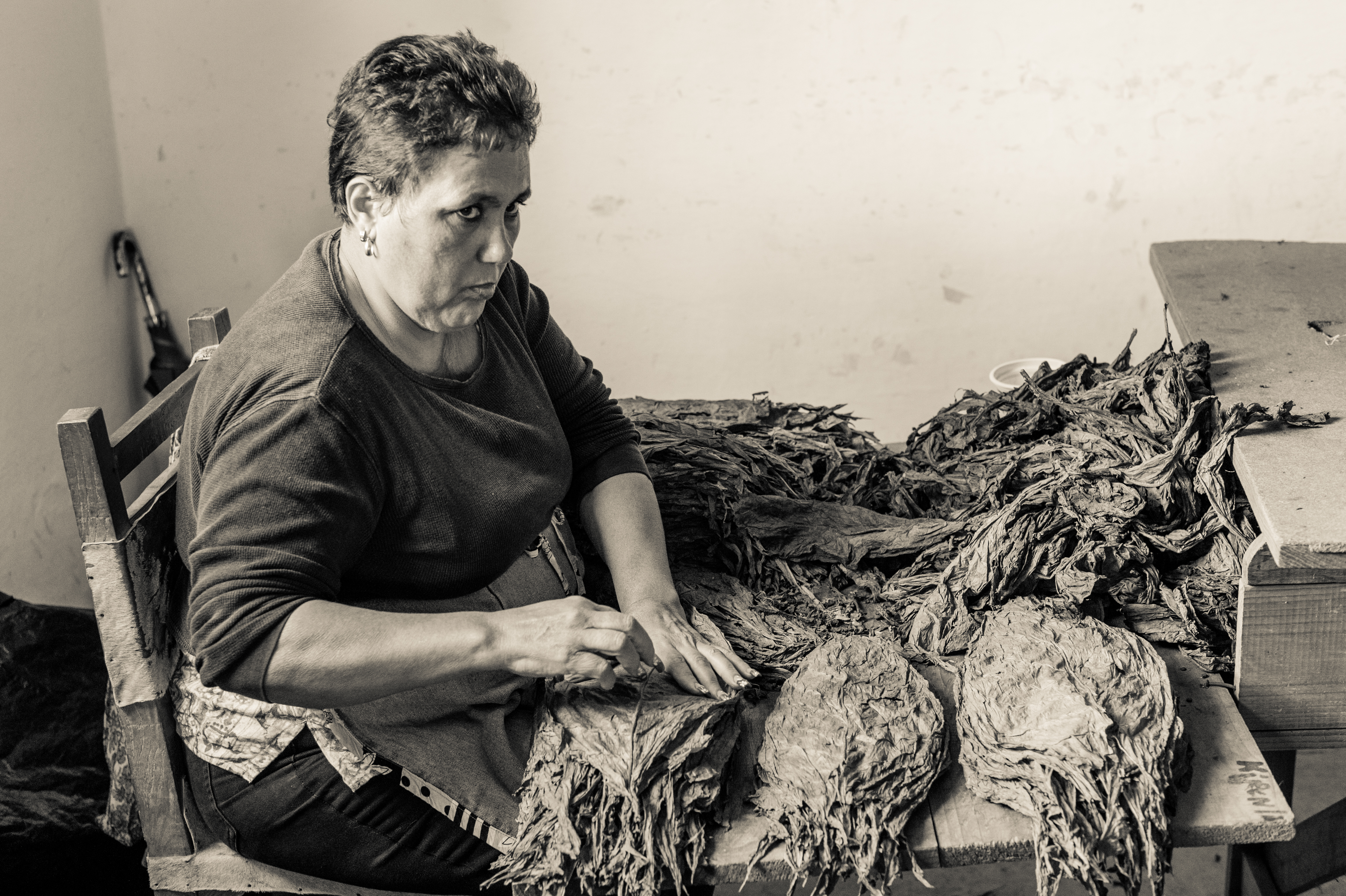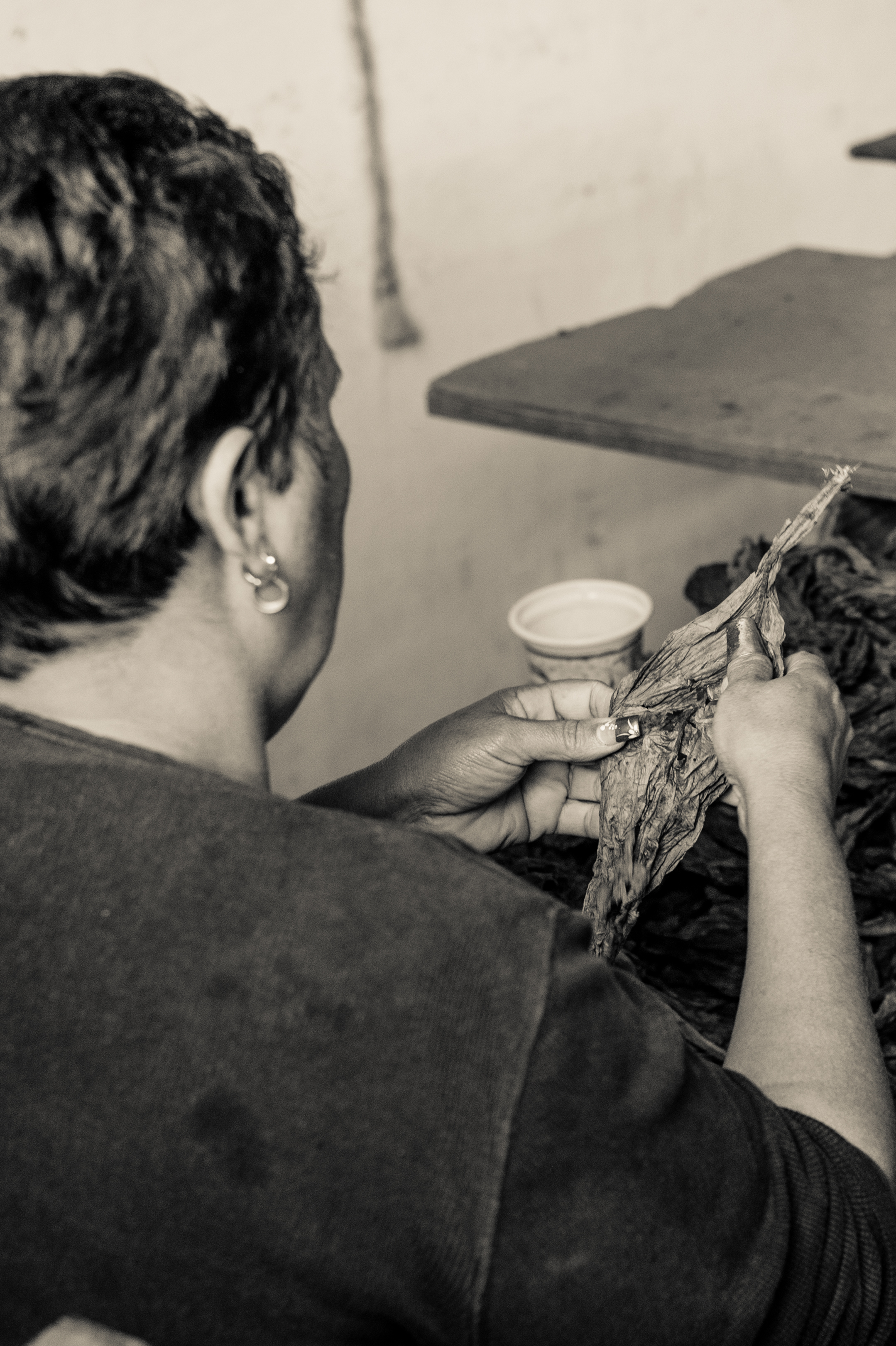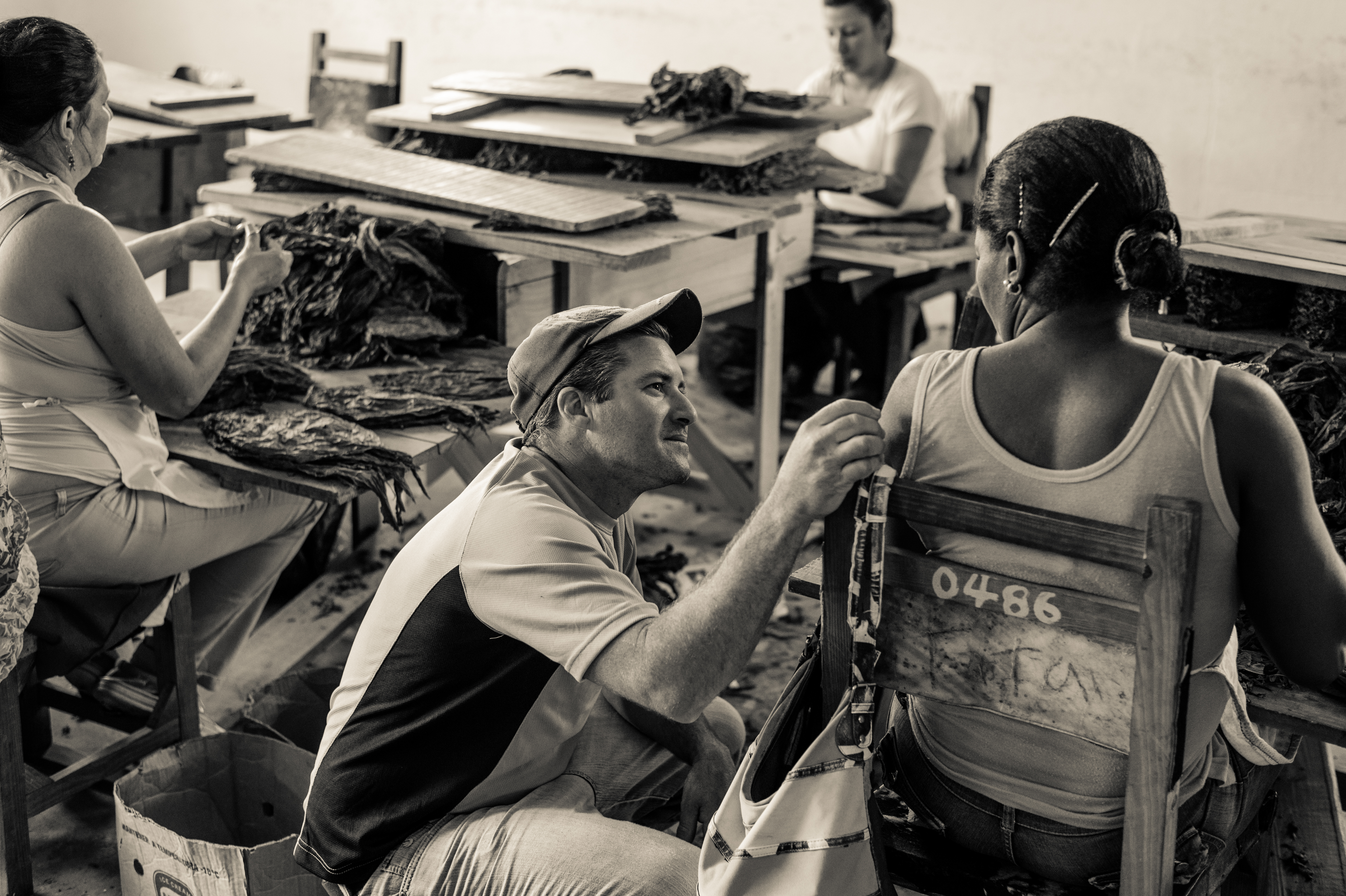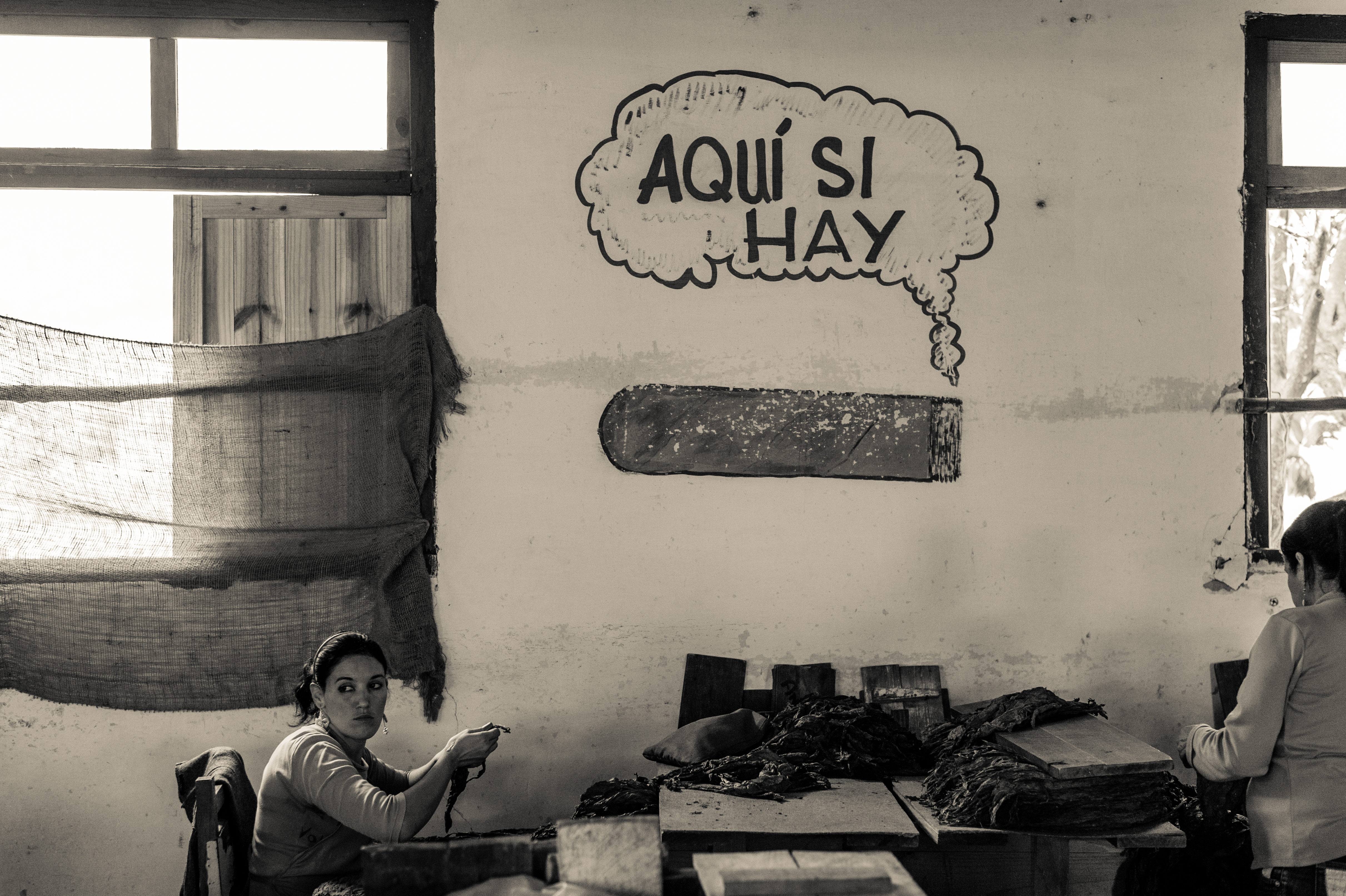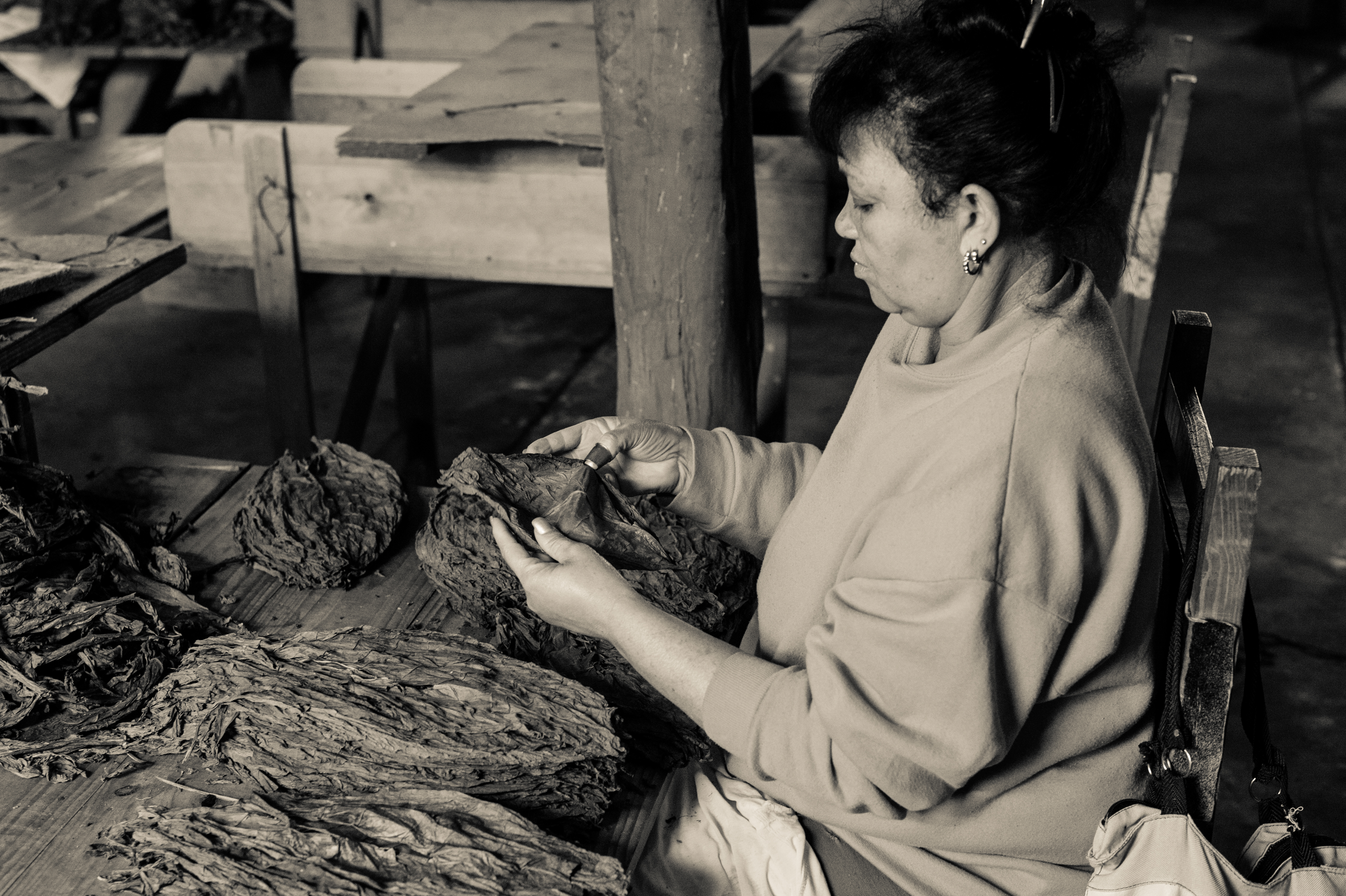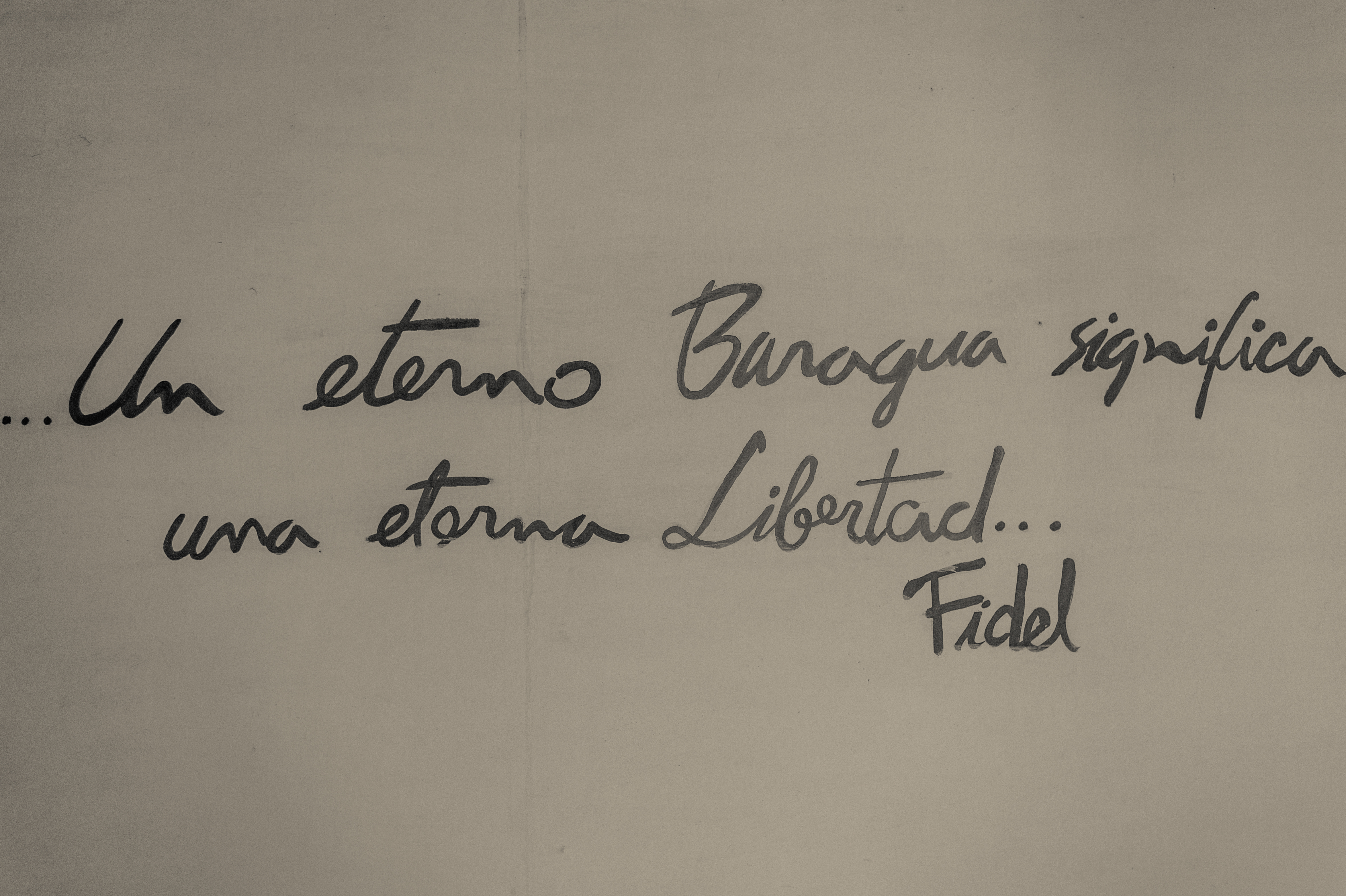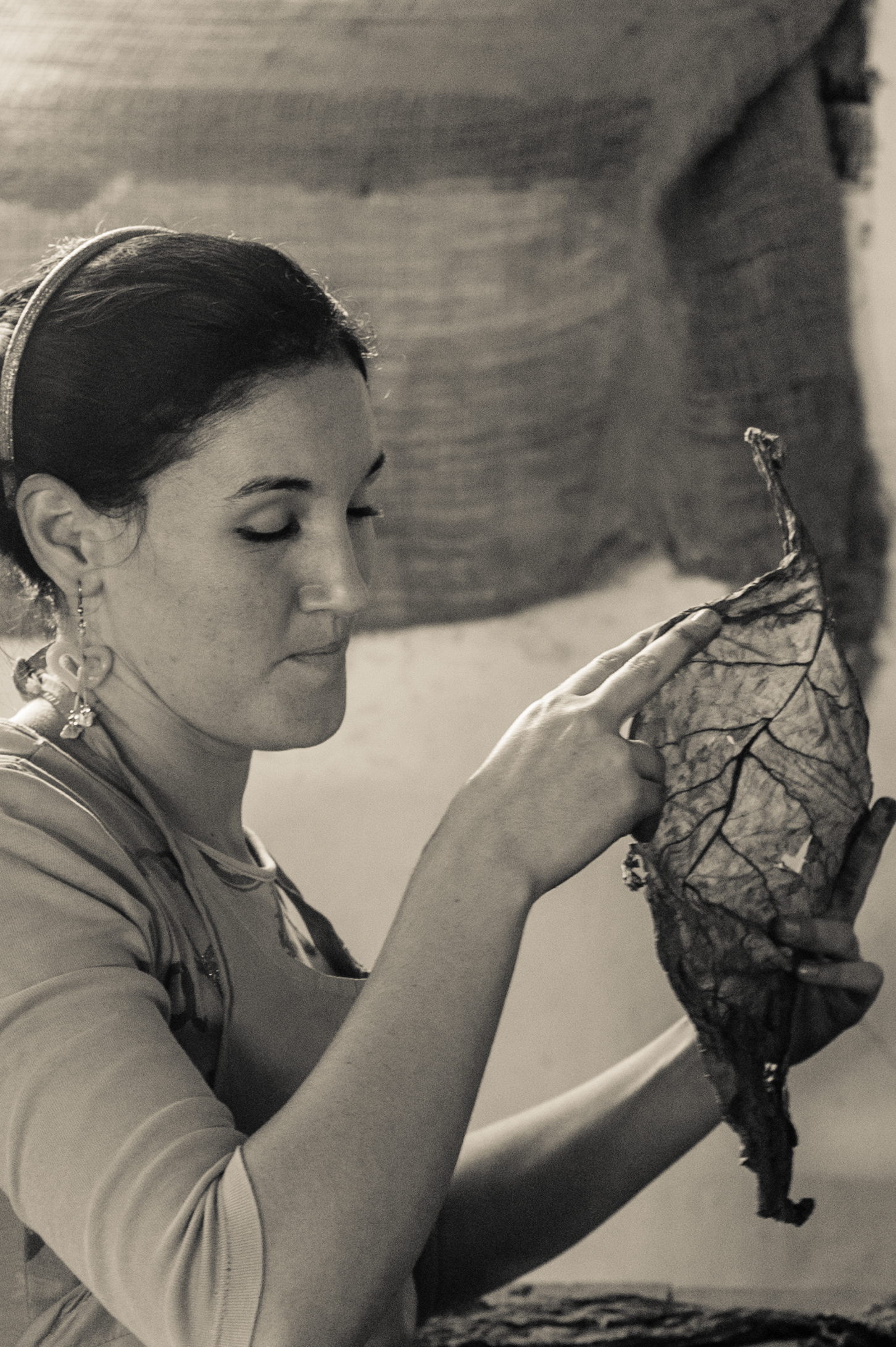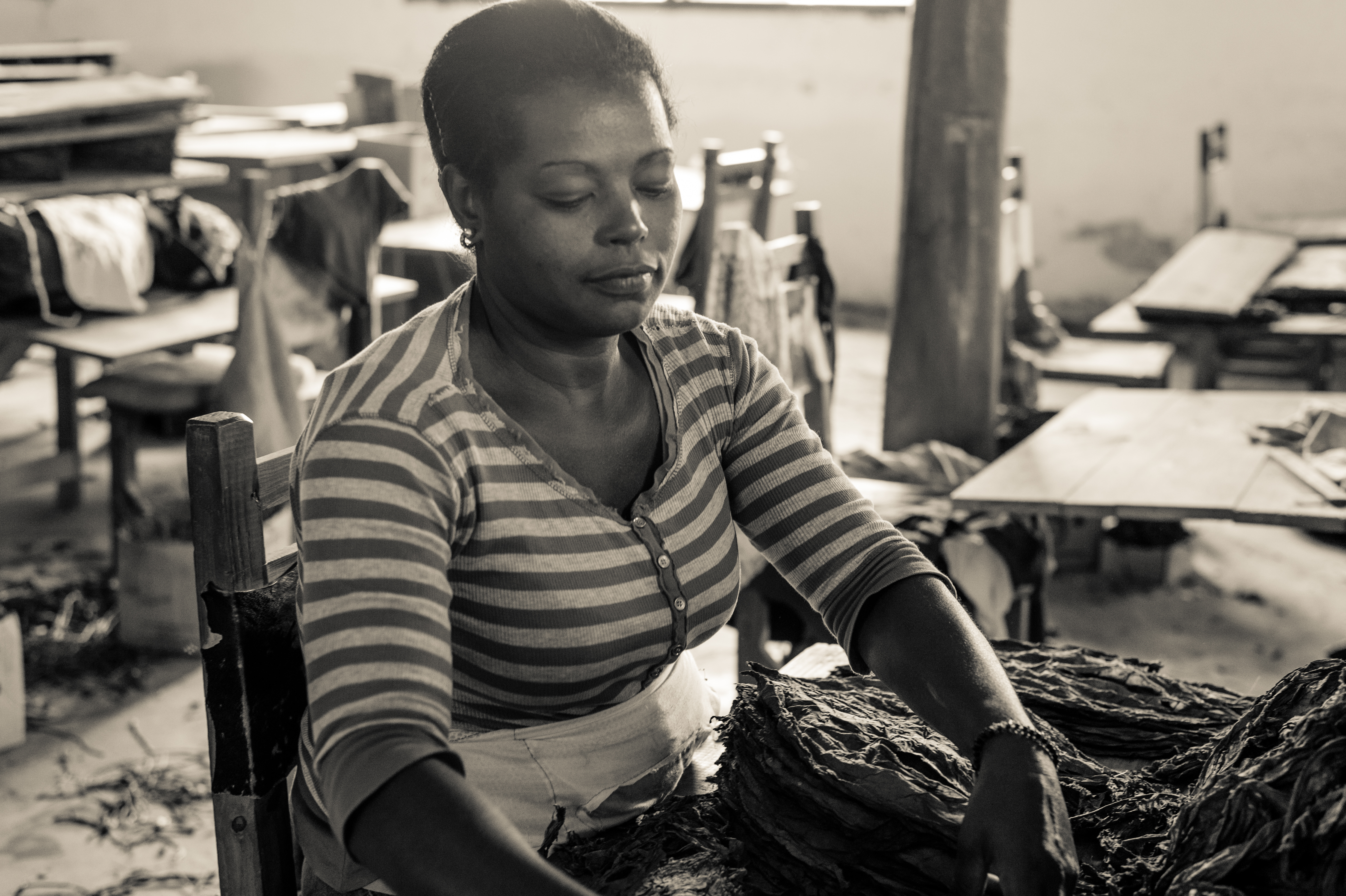 Tobacco Road.
Tobacco Road.
Welcome back, everyone! It’s time for another Cuba set from my photography workshops there in December 2014 and January 2019. During both trips we made the journey out to a very special part of Cuba, Viñales Valley (Valle de Viñales), in Pinar del Río Province.
All of the photos in this set were taken in and around the Viñales Valley which is located in the Sierra de los Órganos mountains (part of the Guaniguanico range). It is a mostly rural and stunningly beautiful part of Cuba (and is said to have been Fidel’s favorite part of the island). The valley is a national monument and a UNESCO World Heritage Site – read more about the UNESCO designation here.
In the first two color photos below you will get a glimpse of the incredible landscape in Viñales Valley. The valley is what is called a “karstic depression” with dramatic mogotes (limestone hills) rising like islands from the bottom of the valley with some up to 1,000 ft. (around 300m) tall. The mogotes in northern Puerto Rico near Arecibo are a similar geological phenomenon. The first photo overlooking the valley was taken at dawn from the hotel; the second is of an old farmhouse in a former tobacco farm by one of the many mogotes in the valley – it’s now a garden-to-table paladar (a privately owned restaurant which is something that started to be allowed in Cuba under the limited reforms after the fall of the USSR). We ate elsewhere on the day I took the second photo (at a different paladar) and stopped here for the photo opp – I can’t comment except to say that the reviews I saw online are strong, and the proprietors were incredibly welcoming when we asked if we could stop and have a walk around the property and take some photos. Of course, that’s Cuba – a warm and friendly welcome is what we almost always experienced.
Here is a map so that you can get a better sense of the geography. You can see Pinar del Río Province outlined in red at the western end of the island of Cuba. It’s about a 2 1/2 hour drive from Havana without stops.

This post, however, is not so much about the incredible physical beauty of Pinar del Río but rather the rural life there and more specifically tobacco which (along with tourism) is a big driver of the local economy. There is a lot of tobacco production in the vegas (fields) of the region – the tobacco cultivation is the main crop. In fact, the Pinar del Río fincas (plantations) produce some of Cuba’s best tobacco. Agricultural practices remain very traditional, and the photo of the farmer with the ox drawn plough is not something that is an unusual sight. The plantations are very definitely not of the type one sees in the southern states of the US, and don’t let that word plantation fool you. The tobacco finca and other farms we saw there are very simple and basic – banish that vision of the antebellum country mansions in the US tobacco country from your mind. (Actually in the US south there were and to a certain extent still are many smaller and more modest tobacco growing farms – you can read more here in a post I did about the Virginia and North Carolina tobacco country last year .)
 We visited one of the highly regarded tobacco plantations there (the Finca Quemado del Rubí in San Juan y Martinez) which is where the photo of me above was taken during the 2014 trip, and also did a long walkabout through the farms and fields, but those adventures are for another future post. The proprietor of that finca, Héctor Luis Prieto, is the youngest person ever to win the Hombre Habano (Habanos Man of the Year Award), production category. (The photo here of Sr. Prieto with some of his awards is not mine.) There’s only one photo in this set below from the very memorable visits to that finca in both 2014 and 2019 – those photos belong in their own post to do them justice. Our local Cuban guide who accompanied the group is pictured enjoying a smoke in the tobacco barn of one of the off-label cigars we purchased at the farm – made with the same tobacco supplied to the legendary companies in Havana. In the photo above I am smoking a cigar rolled for me by the finca’s resident master torcedor (cigar roller). I promise that at some point in this series of Cuba posts we’ll return to Pinar del Río and have another look around together, including the Finca Quemado del Rubí, along the Ruta del Tabaco (Tobacco Route). By the way, I am not normally a cigar smoker and certainly not a cigar aficionado. I am told by those in the know, however, that what we experienced there at Finca Quemado del Rubí is a very big deal in the cigar world.
We visited one of the highly regarded tobacco plantations there (the Finca Quemado del Rubí in San Juan y Martinez) which is where the photo of me above was taken during the 2014 trip, and also did a long walkabout through the farms and fields, but those adventures are for another future post. The proprietor of that finca, Héctor Luis Prieto, is the youngest person ever to win the Hombre Habano (Habanos Man of the Year Award), production category. (The photo here of Sr. Prieto with some of his awards is not mine.) There’s only one photo in this set below from the very memorable visits to that finca in both 2014 and 2019 – those photos belong in their own post to do them justice. Our local Cuban guide who accompanied the group is pictured enjoying a smoke in the tobacco barn of one of the off-label cigars we purchased at the farm – made with the same tobacco supplied to the legendary companies in Havana. In the photo above I am smoking a cigar rolled for me by the finca’s resident master torcedor (cigar roller). I promise that at some point in this series of Cuba posts we’ll return to Pinar del Río and have another look around together, including the Finca Quemado del Rubí, along the Ruta del Tabaco (Tobacco Route). By the way, I am not normally a cigar smoker and certainly not a cigar aficionado. I am told by those in the know, however, that what we experienced there at Finca Quemado del Rubí is a very big deal in the cigar world.
In the meantime, get ready for what was for me the highlight of the excursion to this area. Our intrepid workshop director arranged for insider photography visits for us at a lot of places in Cuba, and one of the most special was a photo shoot at a tobacco despalillo just outside of the town of Viñales on the first trip in 2014. It’s a tobacco destemming, sorting and grading facility where the dried harvested tobacco leaves are stripped of their central veins and then classified according to their quality, size and texture – a little known intermediate stage between the farmer and the cigar factory. In Cuba the work is performed mostly by women. This is a very traditional rural factory setting albeit with a post-revolutionary look. I am really enjoying the opportunity to share this once-in-a-lifetime experience with you, dear readers.
The balance of this set will be monochrome. For this particular set of photos it just works so much better in my opinion. We were permitted inside to photograph as the work proceeded. Amazing.
Among other things, there was even a lector (news reader) – someone appointed to read to the workers to help them pass away the day. As I understand it the reader would invariably read the official state newspaper Granma (the propaganda organ put out by the Cuban Communist Party) cover to cover, but after that it might be a book, or something from a magazine or even soap operas and horoscopes. I read that it is a tradition pre-dating the revolution and which goes back to the mid-19th century.
There was not much light inside. These despalillo shots are all high ISO, no flash and mostly very shallow depth of field. There were taken in RAW with a Nikon Df and a treasured (and fast) 50mm Nikkor prime lens. Post processing in Adobe Lightroom with the original color files converted to black & white.
Next post it’s back to Havana.
Let’s start looking at the Viñales Valley now. ¡Vamonos!
Click on (or tap) an image to expand it (and use the arrow to the right on an expanded image to go through the set, if preferred over scrolling down in the post).
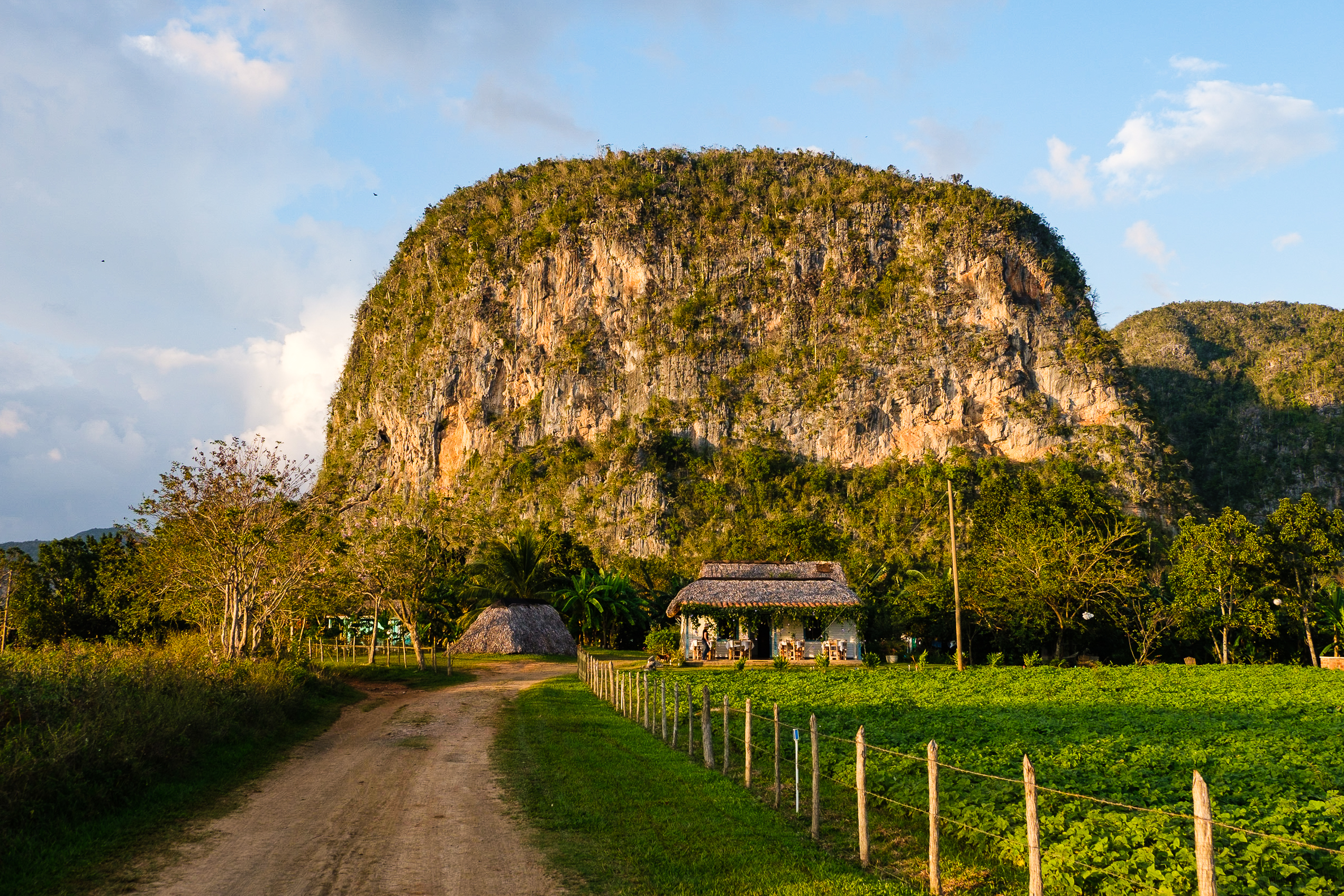
A former tobacco farmhouse by a mogote (limestone hill) in the Valle de Viñales, Pinar del Río province, January 2019
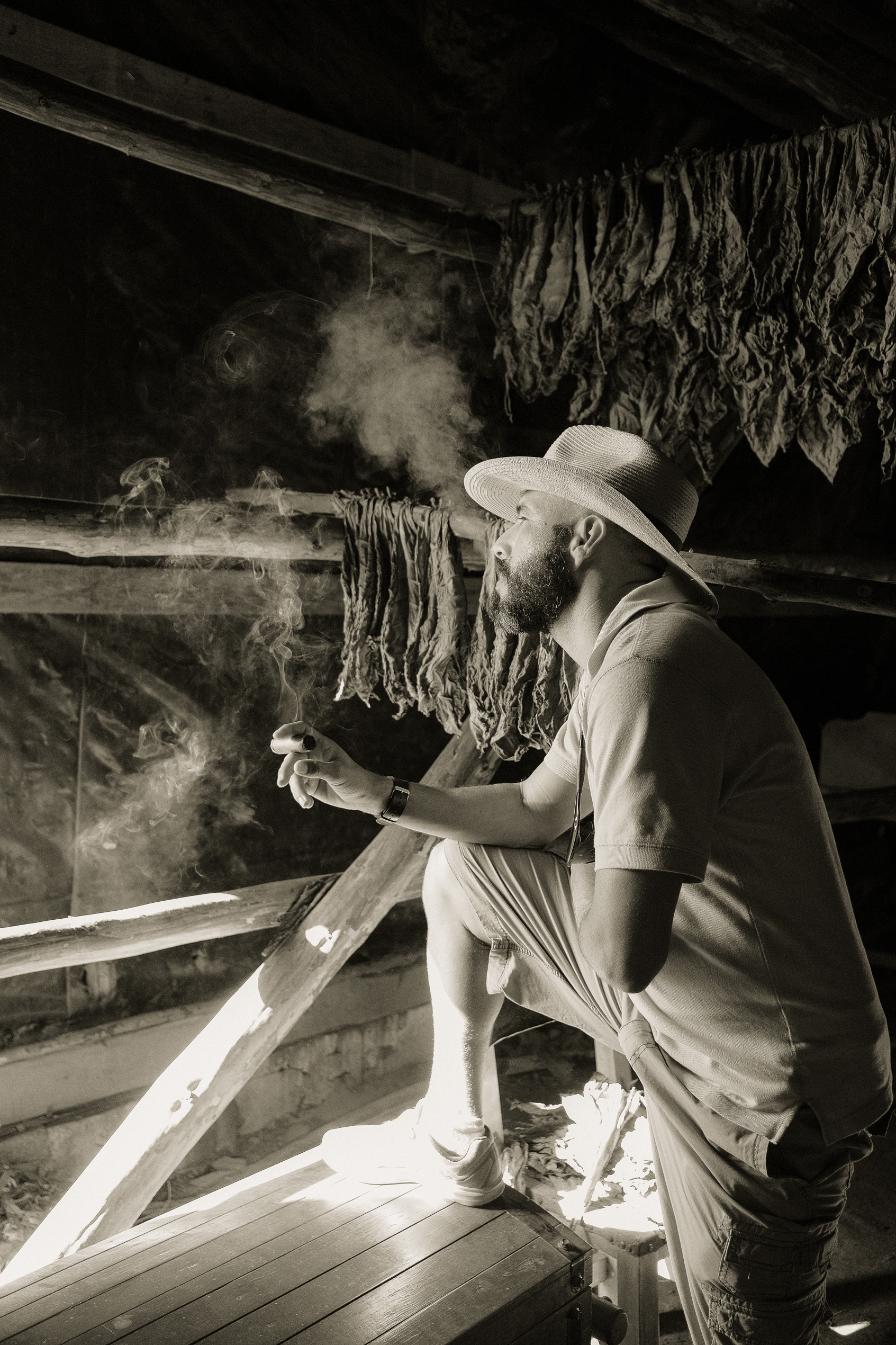
Inside the tobacco barn at the Finca Quemado del Rubí in San Juan y Martinez, Pinar del Río province, January 2019
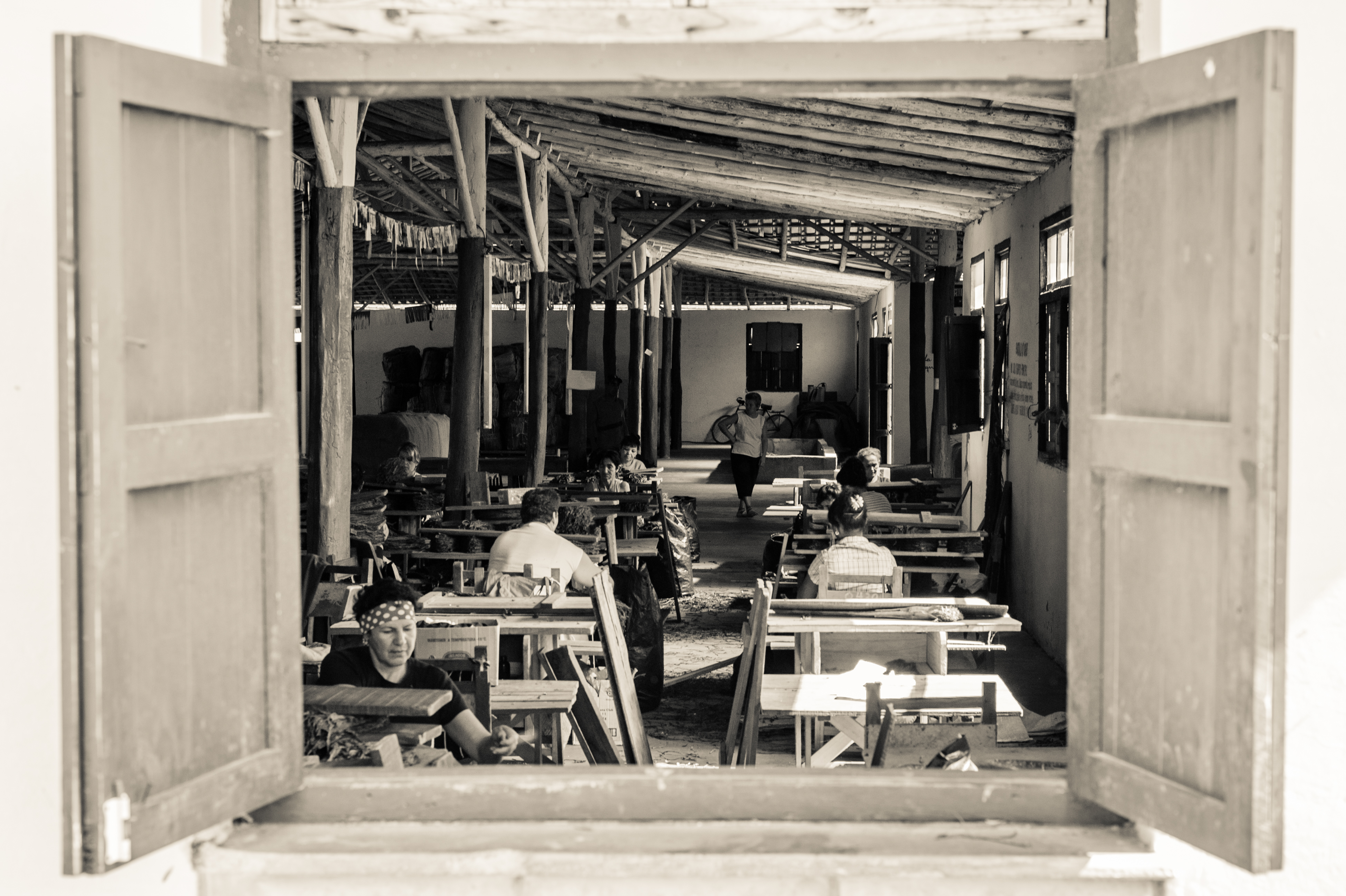
At the entrance looking inside a despalillo near the village of Viñales, Pinar del Río province, December 2014

Tobacco bales inside a despalillo near the village of Viñales, Pinar del Río province, December 2014

The factory floor inside a despalillo near the village of Viñales, Pinar del Río province, December 2014

The words of Fidel. Political writings inside a despalillo near the village of Viñales, Pinar del Río province, December 2014
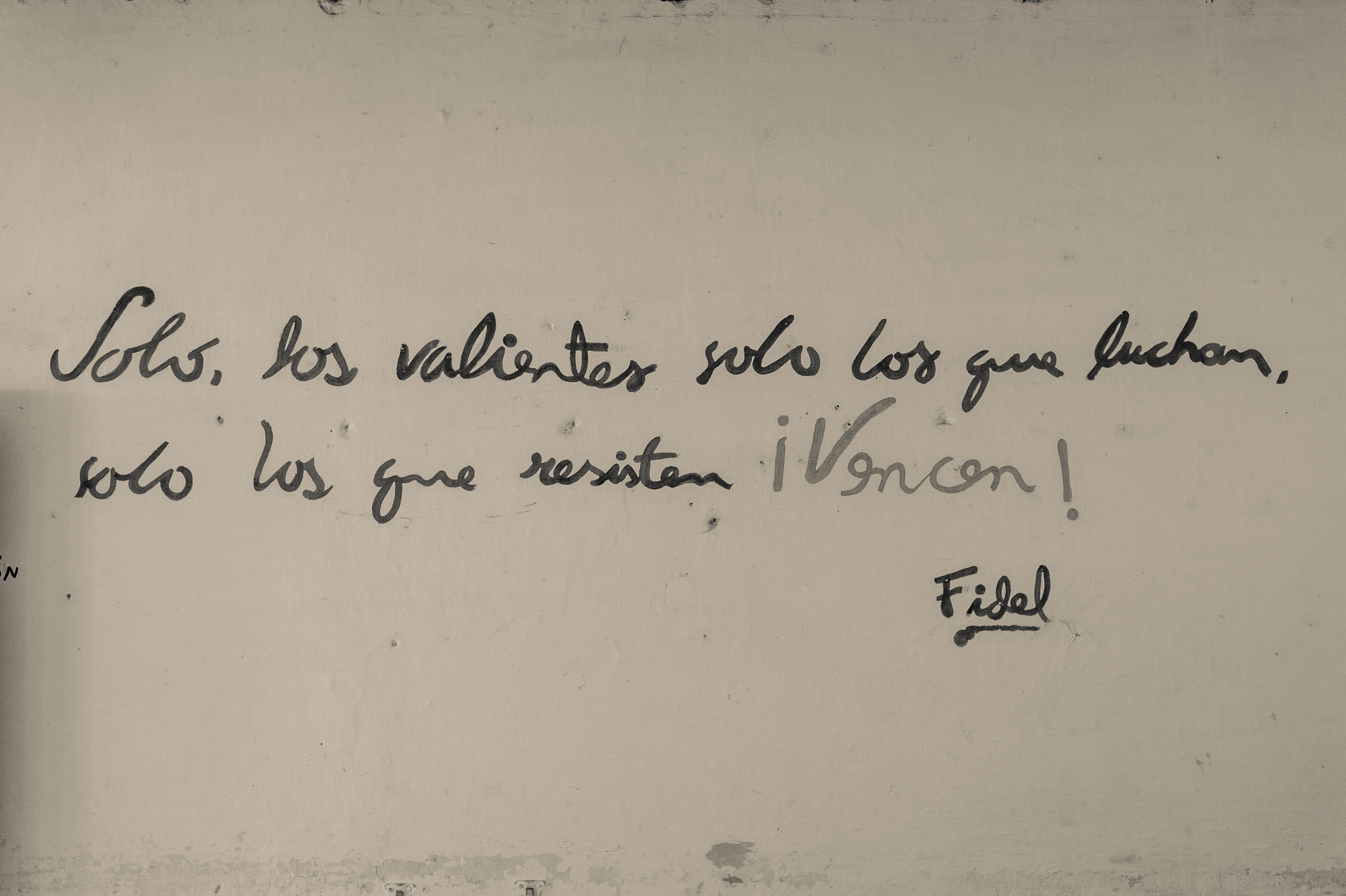
The words of Fidel. Political writings inside a despalillo near the village of Viñales, Pinar del Río province, December 2014
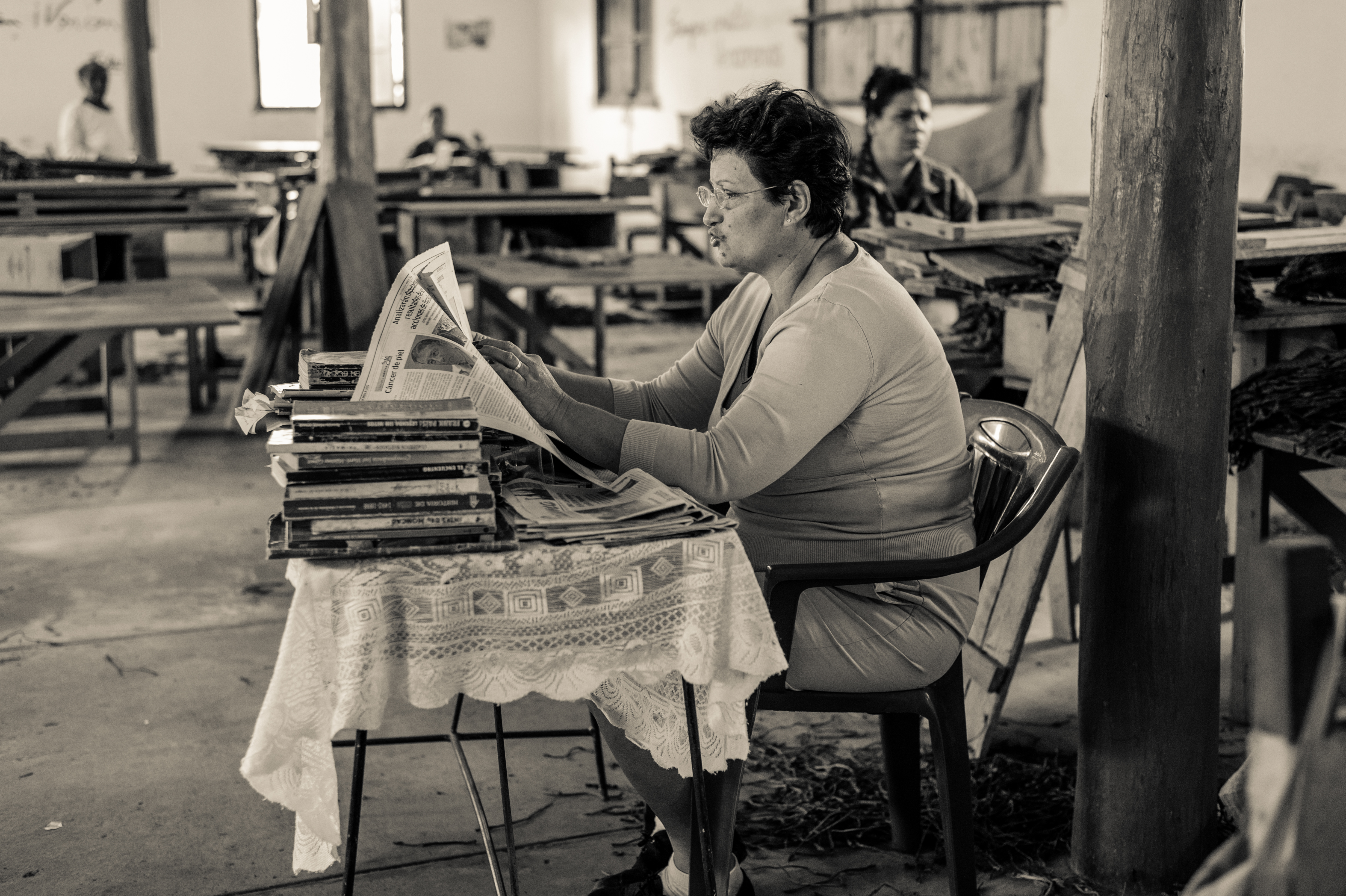
A lectora (news reader) inside a despalillo near the village of Viñales, Pinar del Río province, December 2014

A lectora (news reader) inside a despalillo near the village of Viñales, Pinar del Río province, December 2014
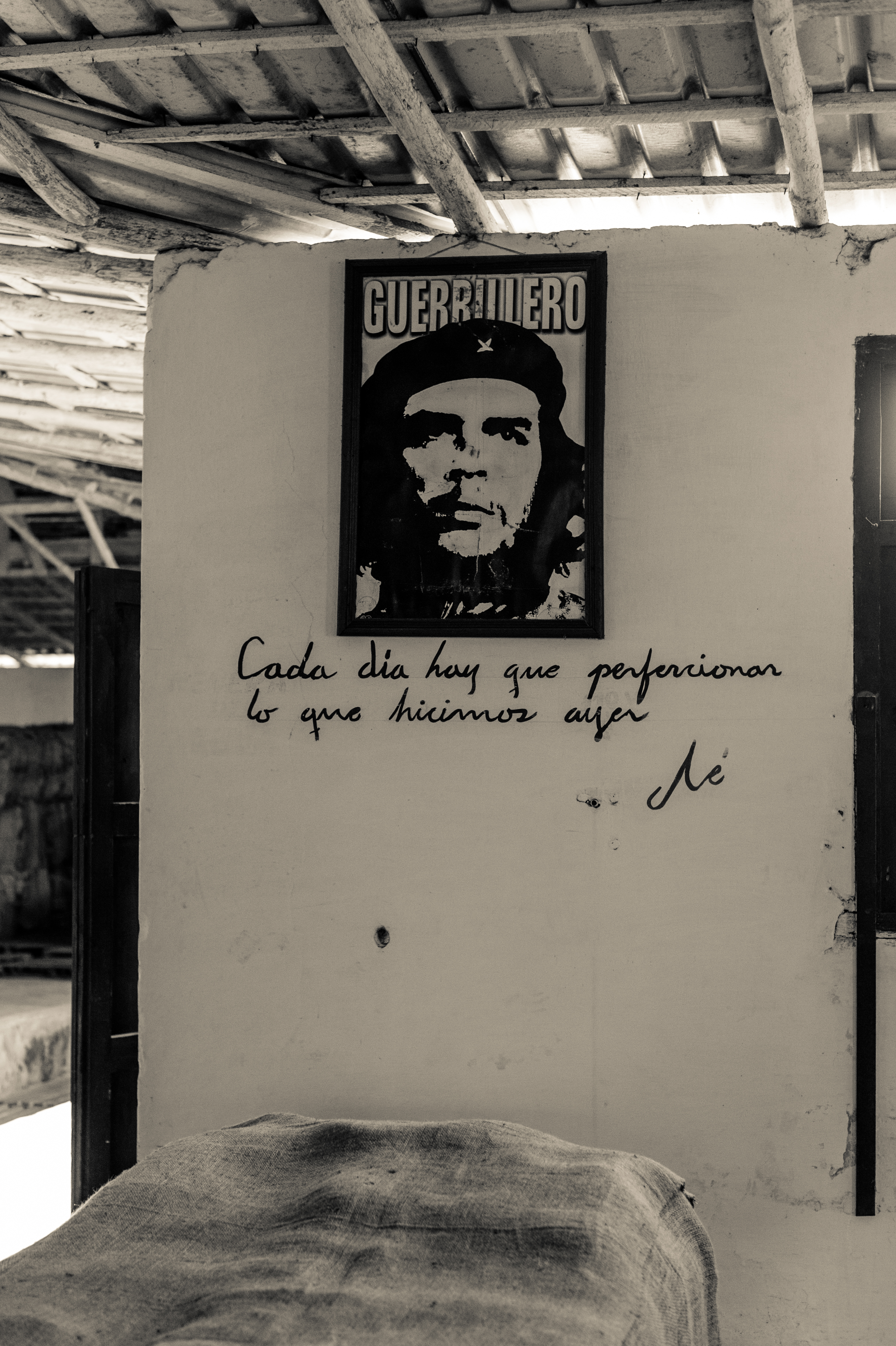
The words of Ché. Political writings inside a despalillo near the village of Viñales, Pinar del Río province, December 2014

El jefe. The factory foreman inside a despalillo near the village of Viñales, Pinar del Río province, December 2014

The factory floor inside a despalillo near the village of Viñales, Pinar del Río province, December 2014

The words of Fidel. Political writings inside a despalillo near the village of Viñales, Pinar del Río province, December 2014
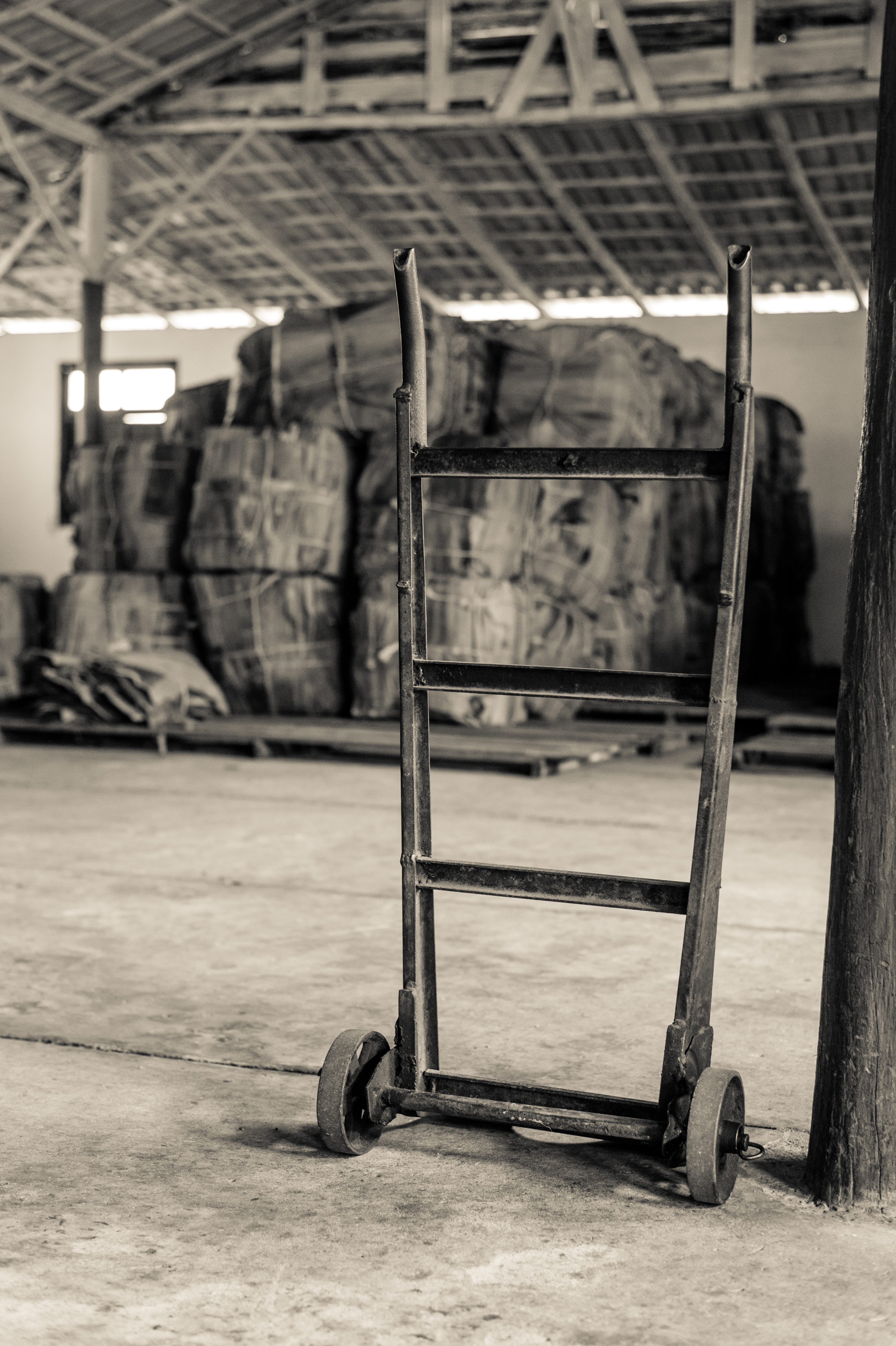
Tobacco bales inside a despalillo near the village of Viñales, Pinar del Río province, December 2014

Tobacco leaves waiting for processing at a despalillo near the village of Viñales, Pinar del Río province, December 2014

The words of Martí. Political writings inside a despalillo near the village of Viñales, Pinar del Río province, December 2014

